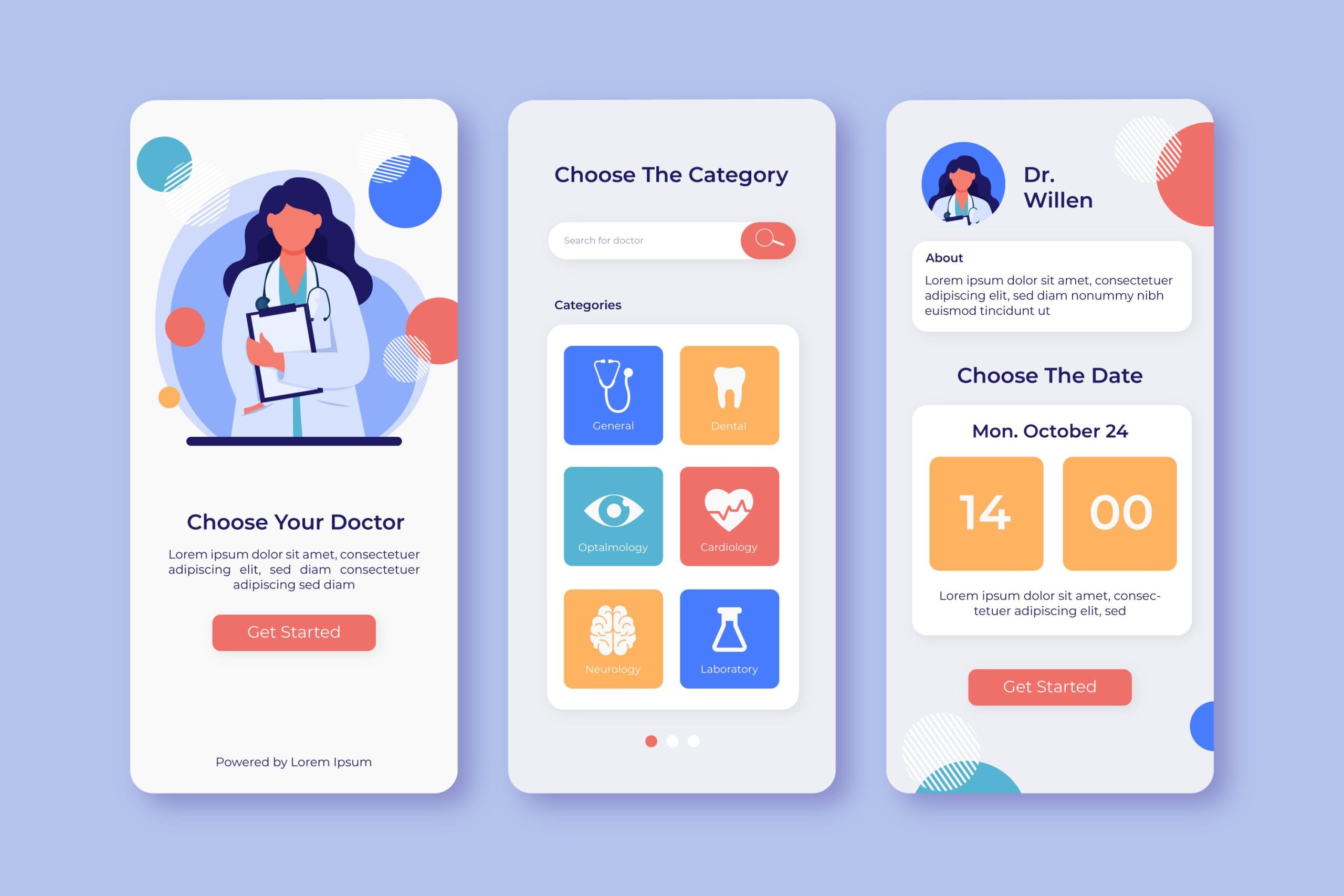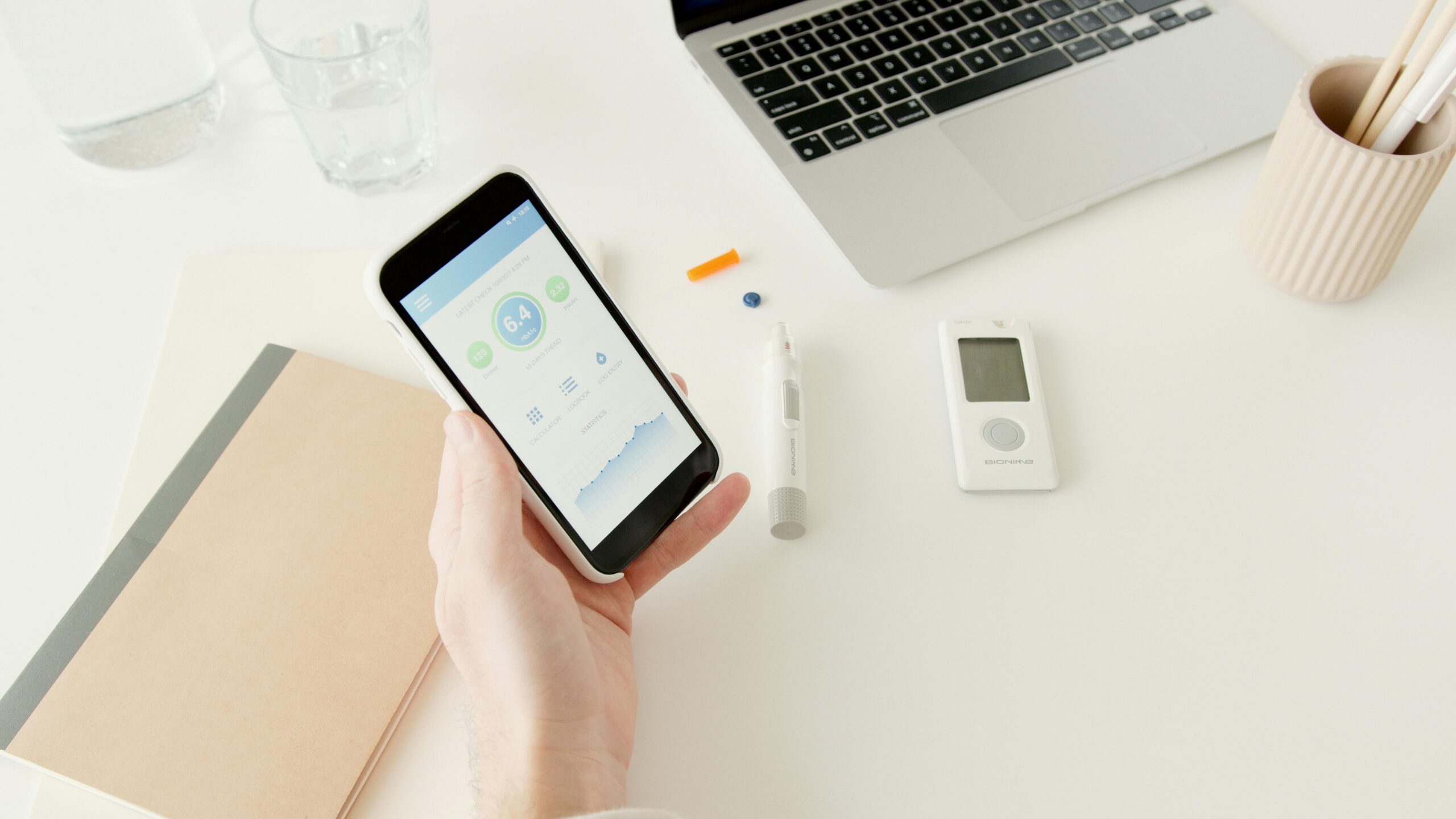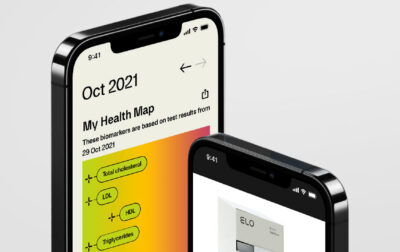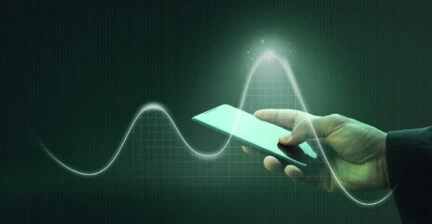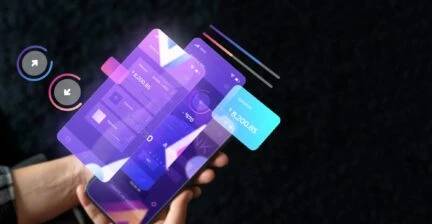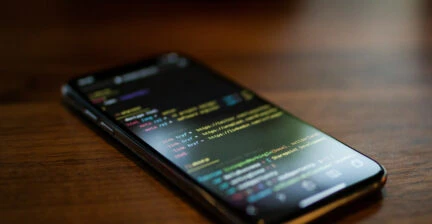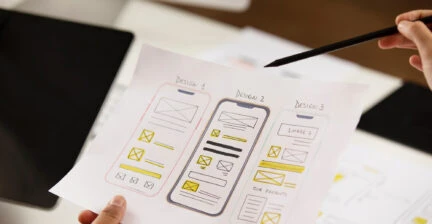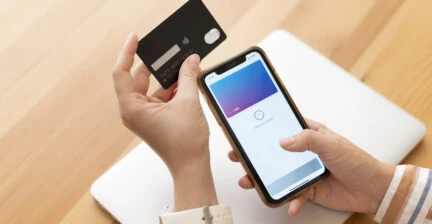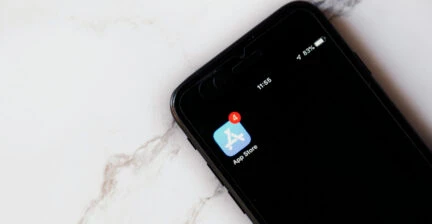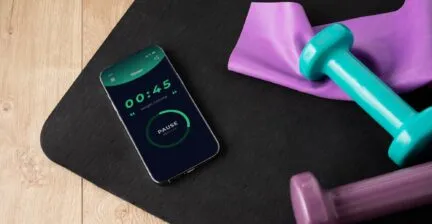HOW TO BUILD A HEALTHCARE APP: A STEP-BY-STEP GUIDE
The global mHealth apps market is flourishing and shining. To wit, in 2024, it is estimated at $36.68 billion, with the potential to reach $88.70 billion by 2032, showing a CAGR of 11.7% in the given period.
Such numbers mean there’s a great demand for healthcare mobile app development, also resulting in a great competition. And if you want your app to excel, be ready to roll up sleeves.
Fortunately, we’ve made first steps for you, preparing a guide on how to build a healthcare app. What market and industry trends to keep in mind, what tech difficulties you might face and how to address them, how to choose the development team — read on to go deep into these and other key aspects.
TRENDS IN BUILDING SECURE MOBILE APPS FOR HEALTHCARE
If you’re still in two minds about what type of an mHealth solution to build, check these key trends in mobile healthcare development:
- Telehealth. The pandemics provoked a surge in remote care, so real-time consultations (through chats and videoconferencing), diagnostics, and health monitoring are not a whim, but a necessity these days.
- Wearable integration. Wearable devices such as fitness trackers, heart rate monitors, smartwatches, blood rate and glucose monitors, pulse oximeters, sleep trackers, and smart clothes (smart shirts, sensor-empowered socks, sleepwear, etc.) gained popularity for a reason. They drive the collection and analysis of real-time PGHD (patient-generated health data), which is key to improving patient care.
- Personalized health solutions are mobile apps tailored to the individual needs, preferences, and circumstances of each patient. They can include medication management, health monitoring, personalized wellness tips (nutrition plans, exercises, etc.), custom programs for managing chronic conditions, mental health support, and more.
- Health gamification presupposes incorporating game-like elements such as virtual avatars, interactive tutorials, fitness challenges, progress tracking, quests, reward systems, and social sharing to encourage patients to adhere to their health goals.
- Mental health apps are designed to help patients manage their mental well-being, offering resources such as guided meditation, stress / depression / anxiety management techniques, cognitive behavioral therapy (CBT) exercises, and a community of peers facing similar challenges.
- AI and Machine Learning. Personalized recommendations based on health data, smart chatbots and virtual voice assistants, predictive analytics, medical image analysis — advanced techs can help your mobile app shine bright among the competitors.
MUST-HAVE FEATURES IN AN MHEALTH APP
The selection of features for your healthcare app depends on the solution type: whether it’s a remote patient monitoring, fitness, or blood pressure app. However, there are some common features you can’t slip through the cracks.
USER PROFILES
With detailed doctor profiles in mHealth apps, patients can easily choose the needed specialist and access emergency contacts. And doctors should be able to enter, manage, and edit protected health information (PHI), including the full medical history, medications, allergies, and immunizations.
APPOINTMENT SCHEDULING
Implement app integration with personal calendars (Google, Apple, Microsoft Outlook, etc.) so that patients could seamlessly make, reschedule, and cancel appointments without the need to call the clinic. Activate smart notifications and SMS alerts to automatically remind users of upcoming visits, changes in the schedule, and possible cancellation fees.
TELEMEDICINE
Give patients a possibility to receive help at a distance through secure messaging and video consultations. Enable e-prescribing so that patients could receive medications without additional in-person visits. Another telemedicine feature that will help you stand up is remote monitoring. By integrating your mHealth app with wearables such as blood pressure monitors and glucose meters, you enable remote tracking of patient health in real time and give clinicians more data for improved decision-making.
INSURANCE MANAGEMENT
At the time you create a healthcare app, pay particular attention to insurance and payment processing. Implement integrations with insurance providers and multiple payment gateways to control coverage for telemedicine services. Also, introduce secure in-app payments through credit and debit cards, PayPal, ApplePay, and Samsung Pay for consultations and insurance co-pays.
PATIENT SUPPORT
To ensure excellent user experience, enrich your mHealth apps with features like multi-language support for diverse groups, feedback and ratings on healthcare providers and services, as well as educational resources (articles, videos, and other content related to health and wellness).
TAKING IT UP A NOTCH
If you have enough financial resources and related tech competence, add next-gen functionality to your healthcare solution. For example, AI-powered chatbots can provide patients with preliminary consultations, mental health support, and follow-up care. Computer vision will significantly improve medical image processing. Big data and ML will enable preventive medicine. AR and VR might become key to enhancing surgeons’ skills through simulation-based training.
TECHNICAL DIFFICULTIES IN MHEALTH APP DEVELOPMENT
The more complex your healthcare app is, the more technical bottlenecks you might experience. Here’s the list of the most common ones and best practices on addressing them.
PRIVACY AND SECURITY
To avoid technical difficulties in this regard, be ready to employ the following best practices:
- Robust data encryption — including AES, TLS, RSA — to protect data at rest and in transit from unauthorized access.
- Two-factor authentication — including SMS or email codes, time-based one-time passwords — to verify user identities.
- Role-based access control (RBAC) to ensure that users (patients, doctors, admins) can only access information relevant to their role.
- Secure APIs. Another way to enable secure storage, management, and sharing of patients’ records — protecting it from any forms of security breaches is implementing HIPAA-compliant APIs such Box API and TrueVault API.
- Session management and audit trails presuppose tracking sessions and user activity (data changes, failed login attempts, suspicious actions), including automatically logging users out during an inactivity period.
- Regular security assessments and vulnerability testing to preventively detect and address potential weaknesses in an app.
- Regular updates of your mHealth apps and its dependencies to fix security vulnerabilities.
REGULATORY COMPLIANCE
Your medical app should comply with strict regulations that mandate the protection of health data and PHI:
- The US’ Health Insurance Portability and Accountability Act (HIPAA) regulates the protection of electronic health records and grants patients the right to control access to PHI use and disclosure.
- The Food and Drug Administration (FDA) controls the security of new medical devices, including proper labeling and post-market safety.
- The EU’s General Data Protection Regulation (GDPR) ensures a user’s consent for private data collection.
UI/UX
For a great user experience, any mobile app should be easy to use, and in healthcare, where there’s more red tape, this aspect is of utmost importance. To avoid technical bottlenecks here, pay attention to:
- Simple navigation. Provide clear, straightforward menus, so that users could navigate intuitively without confusion. Implement a robust Search API to help easily find information and Navigation APIs like Google Maps for location services.
- Responsive design. Make sure your mHealth app functions well on various devices and screen sizes. Apple HealthKit API & SDK and Google Healthcare SDK & API will give you in-depth documentation in this regard.
- User-friendly layouts. Present information in an easily digestible format through concise language, clear icons and labels, consistent and well-organized layouts, as well as visual aids. Perform usability testing with real users to identify and timely address possible pain points.
- Accessibility. Follow the WCAG Guidelines to meet accessibility standards. Accommodate users with varying abilities through text alternatives, keyboard navigation, voice commands, scalable texts, color contrasts, and screen reader compatibility.
PERFORMANCE
If you plan to add telemedicine functionality to your solution, you might deal with performance issues. Here is how you can address them, ensuring seamless user experiences:
- Code optimization means reducing load times and enhancing responsiveness through efficient coding practices such as modular code writing, asynchronous programming, and algorithms optimization.
- Resource usage minimization presupposes limiting battery, data, and memory consumption by using efficient algorithms, reducing background processes, and implementing local storage.
- Regular performance testing. Evaluate your app’s responsiveness, stability, and scalability across various devices and under various conditions to make sure it can easily handle expected user loads. Also, employ analytics and monitoring tools to track app performance and user behavior.
- CDN implementation. Content Delivery Network usage involves leveraging distributed servers to deliver medical images and videos (including videoconferencing) quickly and efficiently to users. CDNs reduce latency, optimize bandwidth usage, and improve load times, while ensuring regulatory compliance.
- Regular updates. Ensure continuous app enhancement through the release of new features, bug fixes, security patches, and performance optimizations.
INTEROPERABILITY
At the time of empowering your mHealth app with advanced features, be ready to address interoperability challenges. Here are a number of APIs you might need to use to ensure smooth integrations:
- DrChrono API will be helpful in pairing up your app with check-in functionality, patient care platforms, and electronic medical billing.
- BlueEHR will make your solution seamlessly work with EHR and EMR, e-prescriptions, revenue cycle management, inventory tracking, and other key apps and functionality — all in a customized way.
- Doximity API is set to connect doctors with patients by giving your healthcare app access to a network of healthcare professionals and enabling features like secure messaging, collaboration, and data sharing.
By making your app interoperable, you can guarantee revamped care coordination (through real-time data sharing regardless of where it was collected) and patient empowerment (through giving the possibility to control and manage their personal data across various platforms).
Looking for healthcare app developers?
HEALTHCARE APP DEVELOPMENT COST
The cost to build a healthcare is varied, because there are many factors that influence the final check:
- Functionality and app type. Basic features like health tracking and appointment management will be less expensive than advanced ones such as videoconferencing or data analytics.
- Platformity. Whether you want to develop for iOS or Android, or for both, also considering various screens and disability friendliness — this all will affect the healthcare app development cost.
- Location. The final price might differ depending on the region. For example, US developers tend to charge more than tech specialists from Asia or Eastern Europe.
- Compliance. Besides some standard security measures any mobile app should satisfy, mHealth solutions require additional compliance with industry-established rules like HIPAA and some others (depending on the app type and region). This means more tech savvy talent and in turn more expenses.
HOW TO CHOOSE AN MHEALTH APP DEVELOPER
Deciding who will create your healthcare app is crucial, because this choice will influence the overall success of your endeavor. Here are some key aspects to consider.
COMPETENCE
Your healthcare development company should have deep knowledge in all things healthcare and mobile, being ready to deal with cross-platform development, backward compatibility, custom functionality engineering, performance and scalability optimization, data analytics integration, security issues, and more.
REVIEWS
Gauging the company’s reliability and quality of work is made easier with client testimonials and reviews from websites like Clutch, GoodFirms, and more. You can even connect with the company’s previous clients asking for more detailed feedback.
COMMUNICATION
Look for a healthcare development firm with a client-oriented approach. A good provider would conduct an extended interview to understand your business needs, plans, and vision — to come up with a detailed plan and roadmap of the development stages, including aspects such as team composition and tech stack.
SUPPORT
The development process doesn’t end with an app launch. You’ll have to continuously update your app versions, add new functionality, and fix issues. Partner up with a tech team that provides comprehensive post-launch support and maintenance services
CONCLUSION
As you can see, building secure mobile apps for healthcare is quite a complicated endeavor that covers multiple specific aspects such as security, interoperability, and compliance. To succeed, be sure to team up with an experienced healthcare software developer. We at Touchlane will be glad to help you throughout the whole journey, as we’ve done in our recent healthcare project Elo Health.
FAQ
1. What are the TYPES of healthcare mobile apps?
You can build mHealth apps for different purposes and users. Among the most popular ones are patient management, telemedicine, chronic disease, medication management, health monitoring, mental health, and fitness apps.
2. how long will it take to build a HEALTHCARE app?
The time to create a healthcare app ranges from 4 to 12 months, depending on app complexity, type, functionality, and regulatory requirements.
3. What are the key benefits of HEALTHCARE mobile app development?
Among the biggest benefits are streamlined medical workflows and collaboration, improved patient health and engagement (which results in promoting value-based care and public health), robust safety and security, and cost effectiveness.
RELATED SERVICES
Elo Health
Staff Augmentation project, where our dedicated unmanaged team was a key player in development of a unique AI mobile app from scratch, designed to help people to be healthy, active and enjoy their lives at the age of 50+ by turning food into medicine. Staff Augmentation 2021 – 2024 Industry: Health and fitness, Social networking Apple Store Elo Health
Staff Augmentation project, where our dedicated unmanaged team was a key player in development of a unique AI mobile app from scratch, designed to help people to be healthy, active and enjoy their lives at the age of 50+ by turning food into medicine. Staff Augmentation 2021 – 2024 Industry: Health and fitness, Social networking Apple Store Elo Health
We Cover
- Design
- Development
- Testing
- Maintenance
